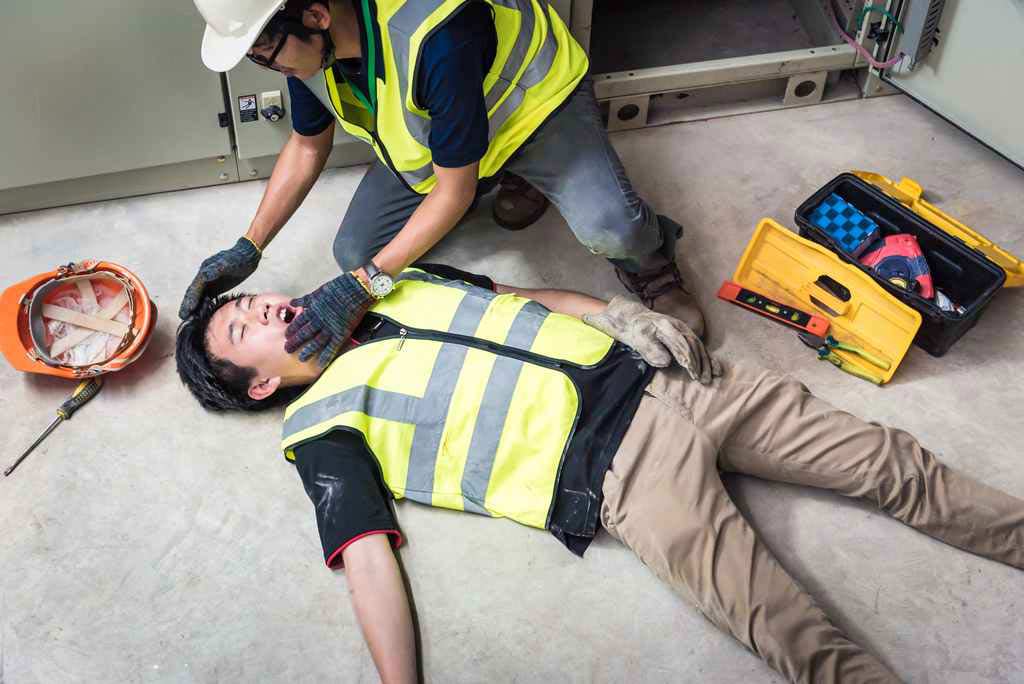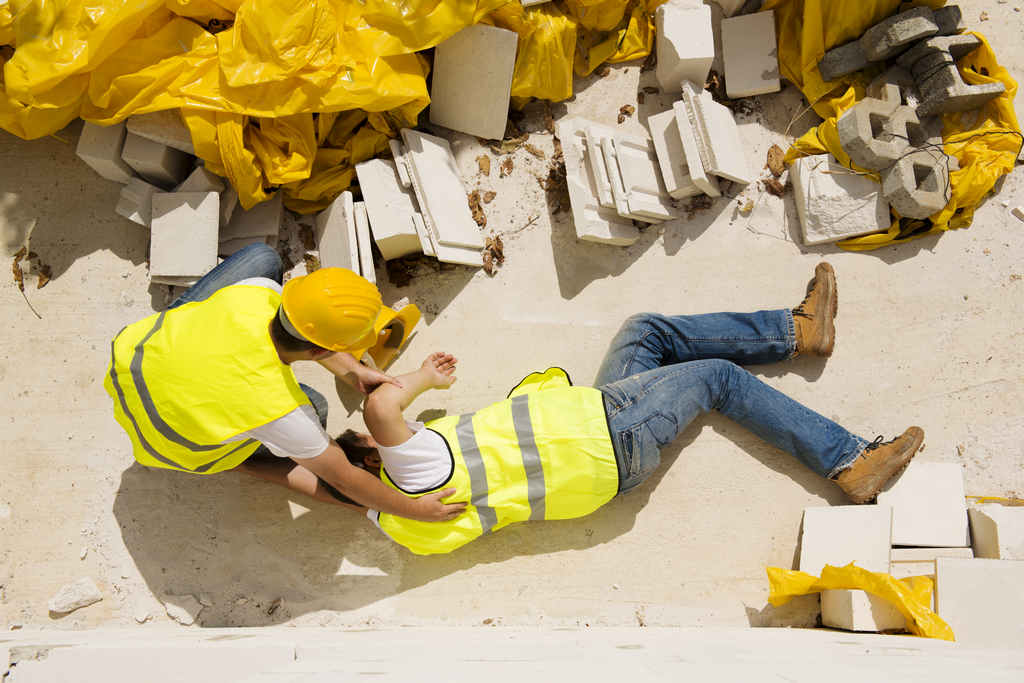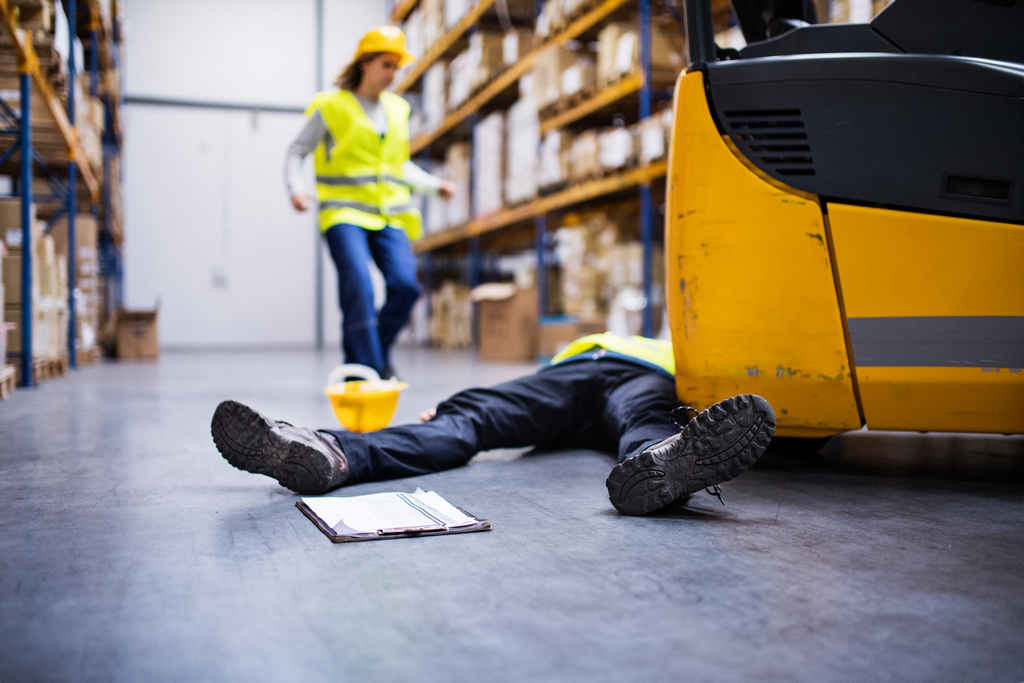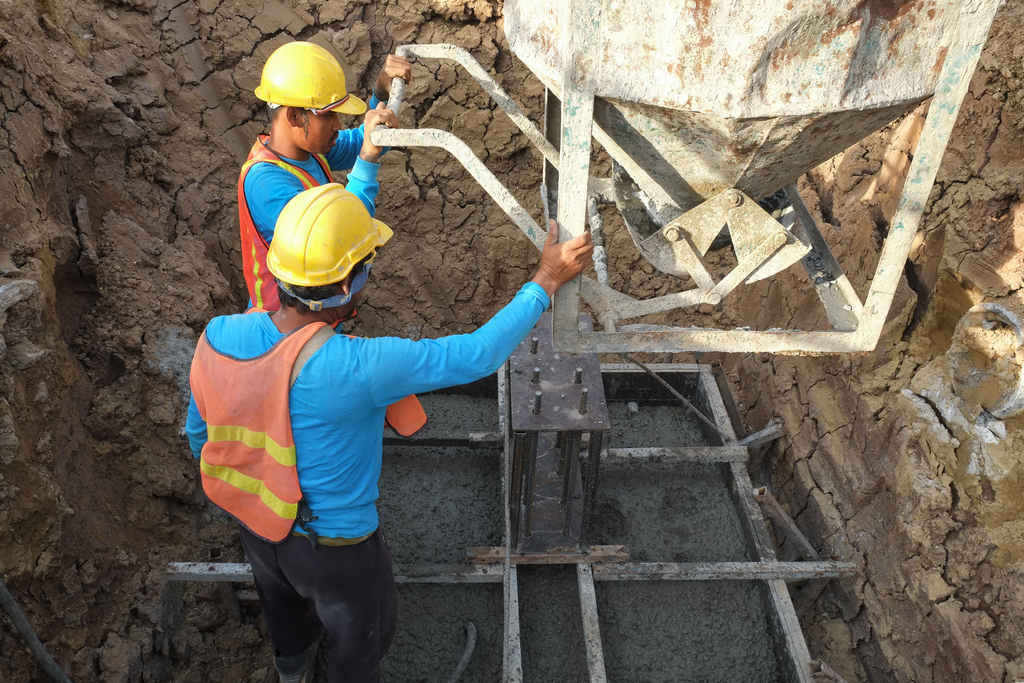Not all construction industry hazards are created equally. A group of hazards are so dangerous that they have earned special attention from OSHA. This group of hazards are called the “Focus Four” and they collectively account for the primary causes of fatalities on construction sites.
Together, these hazards are often referred to as the “Focus Four” because dedicated focus should be given to preventing accidents caused by these hazards. Eliminating these accidents would save 500 lives per year, according to OSHA.
The “Focus Four” includes: Falls, Caught in-between, Electrocutions, and Struck by.
 Image Source: Shutterstock
Image Source: Shutterstock Falls
Falls account for 40 percent of construction workers fatalities, making them the most dangerous of the focus four hazards:
- Fall protection. Use fall protection when working at heights of six feet or more. Remember that regardless of the fall distance, employers must provide fall protection when employees work over dangerous equipment and machinery. Inspect fall protection before each use for broken parts, stress cracks, frayed or kinked ropes and other damage.
- Walking/working surfaces. Guard skylights, ramps, edges, wall openings, open-sided floors and other walking/working surfaces.
- Scaffolds. Scaffolds should be designed by a competent person and include guardrails along open sides and ends. Inspect guardrails, connectors, fastenings, footings, tie-ins, bracing and planking for damage. Remove damaged scaffolds from service immediately, and never exceed a scaffold’s intended load or rated capacity.
- Ladders. Inspect ladders for damage and slippery rungs. Maintain three-point contact when working on ladders, and keep your body between the rails at all times to avoid over-reaching. Finally, leverage NIOSH’s ladder safety app to help employees set up and use ladders properly.
- Housekeeping. A clean, orderly workplace promotes productivity and reduces the risk of slips, trips and falls. Keep walkways, stairs and exits clear of merchandise, supplies and cleaning products. Clean up spills as soon as possible, and use “Caution: Wet Floor” signs in the meantime. In wet weather, use slip-resistant floor mats to keep people’s feet on solid ground.
Struck-by injuries
There are four common causes of struck-by injuries: flying, falling, swinging and rolling objects.
Flying objects. Any time workers use power tools and do tasks that require pushing, pulling and prying, they are at risk of being struck by flying objects. For example, a nail fired from a nail gun might travel through a wall and hit another worker in the eye:
- Wear eye and face protection when required.
- Make sure machine guards are in place.
- Do not operate power-actuated tools without the necessary training.
- Reduce compressed air used for cleaning to 30 psi.
Falling objects. We are at risk from falling objects when we work underneath cranes, scaffolds and other overhead work. For example, a New Jersey man recently died when a tape measure fell from 400 feet above and hit him in the head:
- Wear your hard hat.
- Use toe boards and debris nets to catching falling objects.
- Avoid working underneath loads being moved.
- Do not exceed the lifting capacity of cranes and hoists.
- Be aware of unbalanced loads.
Swinging objects. Mechanically lifted materials can swing, twist or turn and strike workers:
- Stay out of the swing radius of cranes, backhoes and other equipment.
- Rig loads properly to prevent slippage.
- If a worker on foot must control the load, use a tag line.
- Use extra caution on windy days, when loads are more likely to swing, twist or turn.
Rolling objects. One of the most common accidents involving rolling objects is when a worker is hit by a vehicle in a work zone:
- Do not drive a vehicle in reverse with an obstructed rear view unless it has an audible reverse alarm or another worker signals it is safe.
- Set parking brakes when vehicles and equipment are parked, and chock the wheels if they are on an incline.
- Wear high-visibility clothes near equipment/vehicles, make sure drivers can see you and avoid equipment blind spots.
- Stay behind protective barriers in work zones whenever possible.
 Image Source: Shutterstock
Image Source: Shutterstock Electrical hazards
The primary causes of electrical hazards are contact with overhead powerlines, contact with energized sources and improper use of extension cords.
Overhead powerlines. Overhead and buried powerlines carry high voltage that can cause electrocutions, severe burns and falls:
- Stay at least 10 feet away from overhead powerlines.
- Use a spotter if it is hard for workers operating the cranes, scissor lifts or other equipment to see overhead power lines.
- Unless you know otherwise, assume overhead lines are energized. Ask the utility company to de-energize lines and identify buried power lines in the area.
- Use non-conductive wood or fiberglass ladders when working near power lines.
Energized sources. Live parts, damaged or bare wires and defective equipment and tools can cause electrical shocks and burns:
- Isolate electrical parts with guards, barriers or covers.
- Ground power supply systems, electrical circuits and electrical equipment, and use ground fault circuit interrupters.
- Use power tools as designed, and inspect tools before using them. If a tool shocks you or smokes and sparks when you turn the power on, take it out of service and notify your supervisor immediately.
- Follow lockout/tagout procedures.
Extension cords. The normal wear and tear on extension and flexible cords can loosen or expose wires, creating a hazardous condition:
- Do not misuse power cords. Cords that are kinked, tied in a knot, crushed, cut or bent cannot insulate electrical current safely.
- Inspect extension cords for damaged insulation, exposed wires, frayed ends and missing or unsecure prongs. If you find a damaged cord, take it out of service immediately. Don’t try to repair it by taping or splicing it.
- Do not make unauthorized modifications to your extension cords.
- Do not run extension cords through areas where they are likely to get wet or damaged.
 Image Source: Shutterstock
Image Source: Shutterstock Caught-in or -between hazards
Caught-in or -between injuries happen when workers are crushed between objects. Common examples include cave-ins, workers being pulled into machinery and workers crushed between rolling, sliding or shifting objects.
Cave-ins:
- Do not work in an unprotected trench that is 5 feet deep or more.
- Enter or exit a trench or excavation only by using a ladder, stairway or properly designed ramp that is placed within the protected area of the trench. Do not work outside the protection system.
- Set spoils and equipment at least two feet back from the excavation. If that isn’t possible, temporarily store them somewhere else.
Caught in machinery:
- Never remove a safety guard when a tool is being used.
- Follow lockout/tagout procedures for clearing jams and cleaning machines.
- Do not wear loose clothing or jewelry that can be caught in moving parts.
- Tie long hair up to keep it out of machines.
Crushed between objects:
- Know where heavy equipment is at all times, and keep a safe distance from it.
- Never place yourself between moving materials and an immovable structure, vehicle or stacked materials.
- Make sure all loads carried by equipment are stable and secure.
- Wear a seatbelt to avoid being thrown from a vehicle and crushed by the vehicle if it tips over.
- Make sure forklift operators are trained and certified.
- Enforce a traffic control plan, and ensure workers wear high-visibility clothing that meets ANSI standards.
 Image Source: Shutterstock
Image Source: Shutterstock Additional Resources
- Introduction to the Construction Focus Four Outreach Training Packet [PDF]
- OSHA Focus Four
